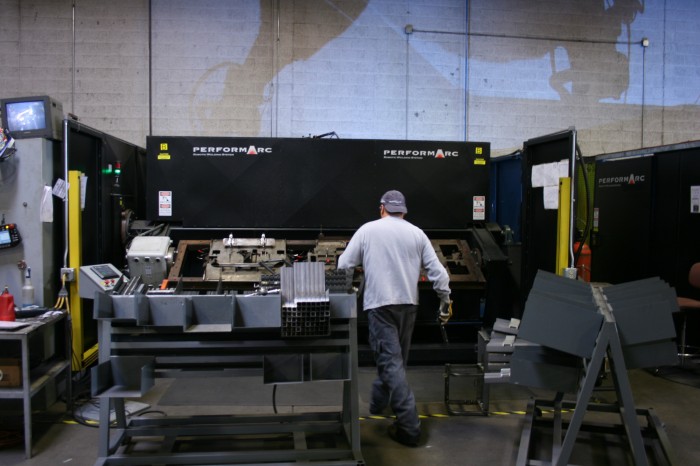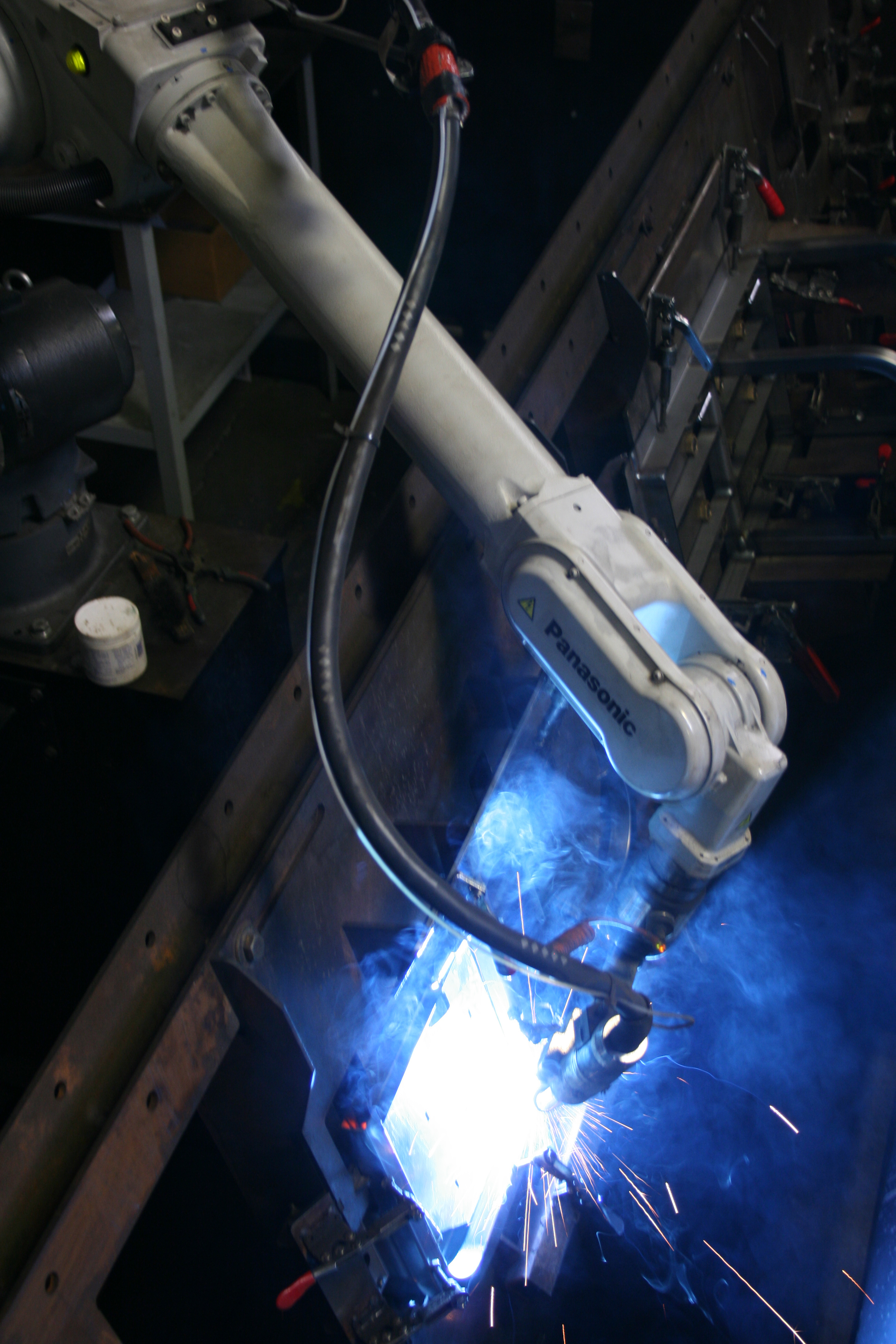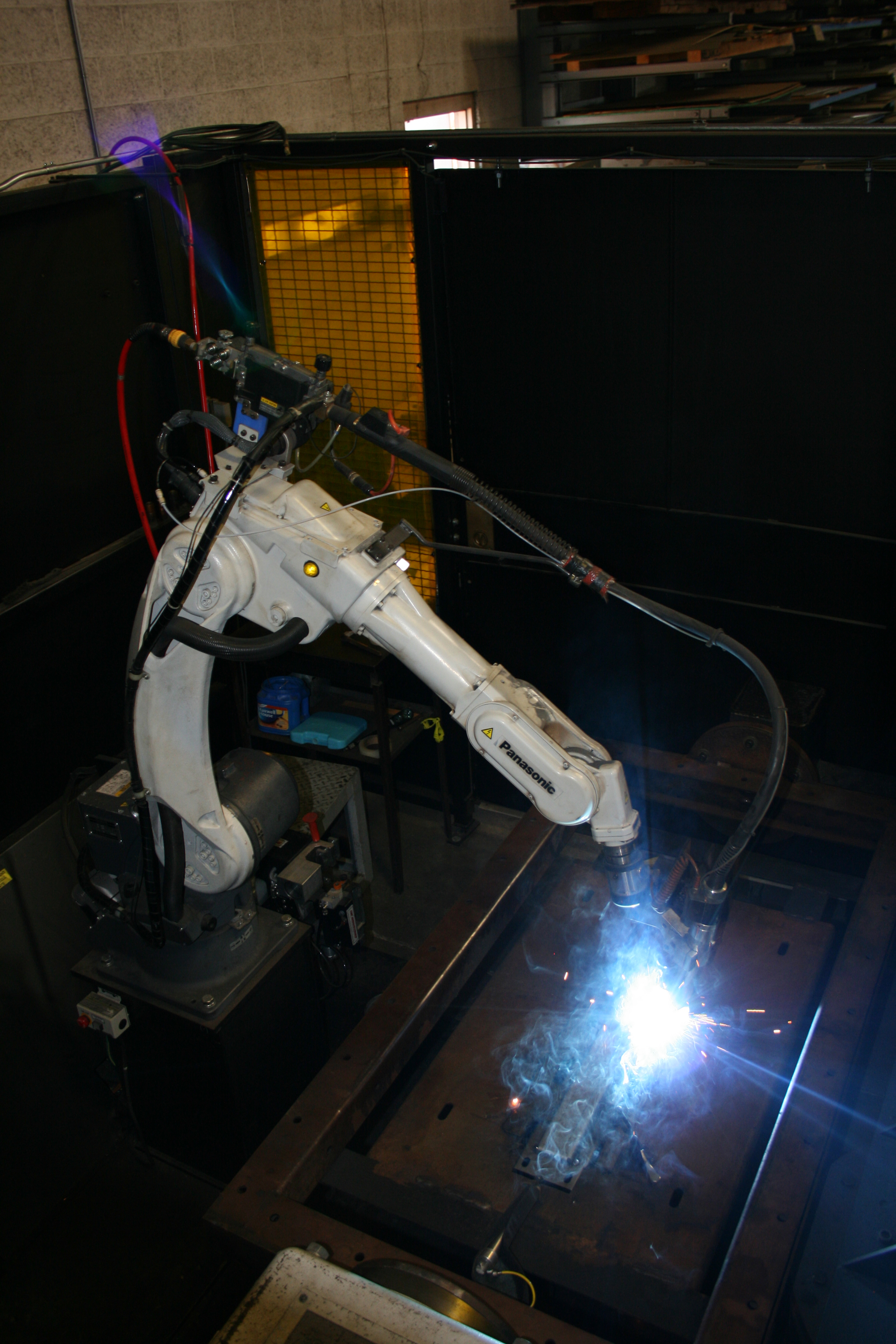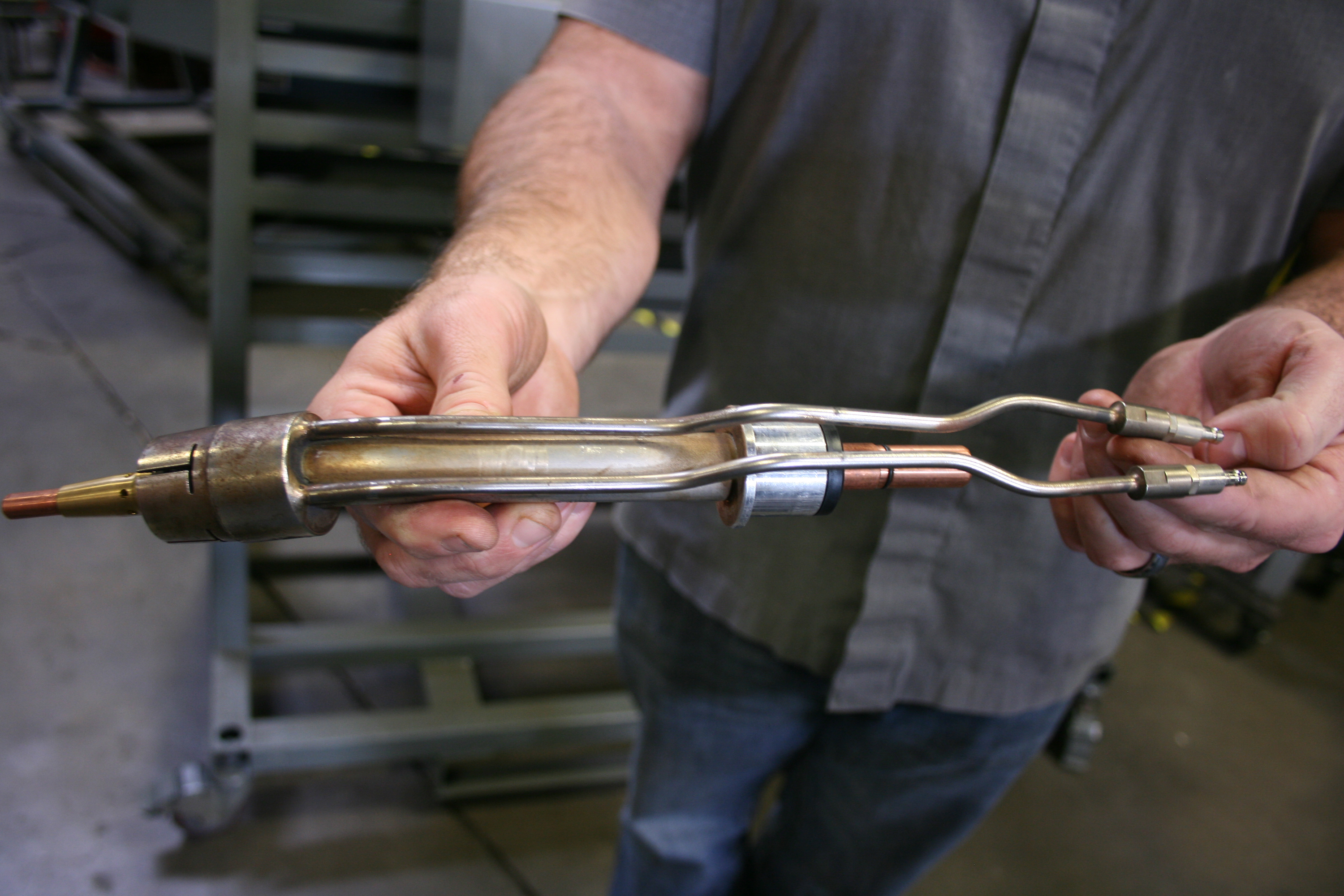Robotic Work Cells Help Diversify Business
Take a look at how contract manufacturer K-zell Metals can diversify and compete against global competition by bidding and planning fabrication work more aggressively with its increased capabilities and automation flexibility.
Posted: May 15, 2012
At a time when manufacturers are looking for new ways to diversify and compete against global competition, K-zell Metals, Inc. (Phoenix, AZ) has been proactive in anticipating changes in the market through process improvement. This specialty fabrication and contract manufacturing business was started in 1986 by Don Kammerzell, a metallurgical engineer with more than 40 years of experience in steel fabrication.
“About ten years ago we started getting involved in military work and rapidly noticed that our business model was changing from being the traditional job shop into a contract manufacturing facility,” recalls Kammerzel. “As we looked at the work that was out there, we saw that there was a need for more precise assemblies in the work that we were doing. We found that if we combined a laser, CNC press brakes and a robotic welding cell, we could be much more competitive in the marketplace. The combined precision of the laser and CNC press brakes allowed us to fixture our parts properly, so robotic welding made a lot of sense.”
Through the addition of two PerformArc™ pre-engineered robotic weld cells from Miller Electric (Appleton, WI), K-zell was able to substantially increase productivity by more than 20 percent, reduce set-up time and find new efficiencies in its welding processes — even on relatively short production runs. A modular design allowed each system to be quickly dropped into the flow of the shop floor, and features such as offline programming have helped the company quickly take on new work with minimal start-up time.
IMPLEMENTING A ROBOTIC WELDING CELL
As Kammerzell puts it, “I’m really not afraid of too many metals.” K-zell’s global customer base requires the shop floor to be well versed in everything from mild steels and HSLAs to stainless and aluminum – the company also does a sizable amount of fabrication with silicon bronze. Much of the work put through its robotic cells involves components for military and commercial products, ranging from basic mild carbon steel to 4130 chrome-moly.
Run sizes range as high as 4,000 to 5,000 parts. Precision is critical, as many of the parts being fabricated are sub-assemblies that must fit perfectly into larger structures. In selecting a robotic welding solution, the shop needed a system suitable for varying run sizes that could be programmed quickly and efficiently, and could also handle varying thicknesses and types of alloys.
The two PerformArc cells currently at work in the plant are the PA 1100 FW cell and the PA 550 HW cell using advanced 350-amp TAWERS™ robotic welding systems from Panasonic. (Note: Miller and Panasonic Welding Systems Co., Ltd. entered into a strategic partnership in 2010 to form a new business unit within Miller – Miller Welding Automation – designed to deliver complete automated welding systems to market).
“What we really discovered was that there was a cost advantage to selecting a pre-engineered system because it was already done,” explains Kammerzell. “We didn’t need someone to go out and find all of the components and put the cell together. And no matter what we looked at, this was the fastest way to get us in the business.”




















